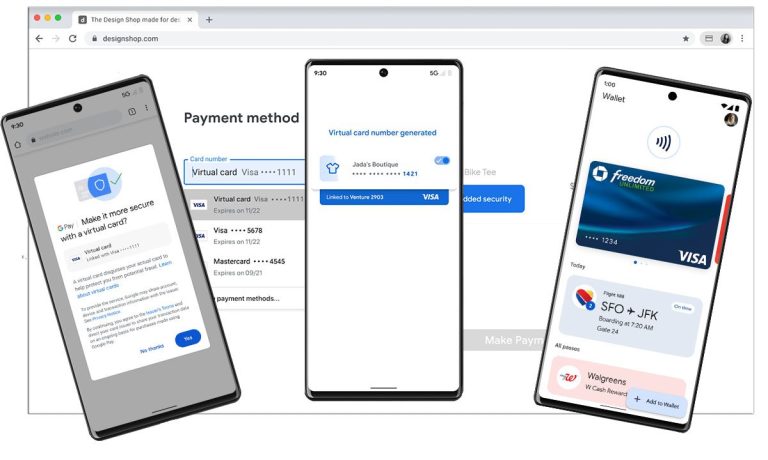The connected ecosystem moves beyond promise into reality when we have every piece of our digital lives easily accessible, easily retrieved and used.
Bill Ready, president of Commerce at Google, told Karen Webster that making digital credentialing more secure across the free and open web — alongside enhanced payments functionality — allows for full participation of consumers and merchants across all online and offline activities.
That fluidity between brick and mortar and online transactions — if done well — can increase conversions for merchants if they have secure, one-click “push button” checkout experiences embedded at the point of sale.
Read also: 30% of Main Street Businesses Plan to Add Digital Wallet Payments
The readiness is there as the physical wallet gives way to the phone-as-digital wallet, a container and microcosm of who we are and what we do. Our phones also house the apps and the products and services that we use to conduct an increasing swath of our daily lives. Keeping those far-flung offerings in one place is critical.
Digital Credentials in the Digital Wallet
Advertisement: Scroll to Continue
To that end, Google said Wednesday (May 11) that its new Google Wallet, initially available on Android, will standardize how consumers access everything from payment cards, digital tickets and even vaccine cards.
The Wallet thus becomes a store for digital credentials — a passport for online transacting, you might say — and access. Google Pay (GPay) and maps and a range of apps coalesce at the point of interaction between consumer and mobile device.
As Ready said, “We’re separating out the Google wallet app and other apps so that you have your wallet as your ‘store’ for credentials.”
That store is designed to carry the digital versions of the tickets and the IDs; the Pay app, available in more than 40 countries, is tethered to peer-to-peer (P2P) payments and payment cards can be added and subtracted at will when Google Pay (GPay) is added to the wallet.
And as noted, initially the announcement is for Android, but per Ready, Google is targeting cross-platform capability. For commerce, tethering the wallet to GPay will be a game-changer, especially at the physical point of checkout. GPay is already on the iPhone and Chrome, as a browser on the iPhone, signals Google’s cross-platform intent (roughly 7% of iOS users use Chrome as their primary browser).
Virtual Card Numbers
“Push-button buying is a necessity,” he told Webster. “But many of these firms would tell you that they still have a significant portion — if not the majority — of their checkout people entering in card data. So these companies are missing out on higher conversion rates.” The commerce ecosystem is also missing out on the lower fraud incidents and the avoidance of false positives from a tokenized push-button buying experience.
Ready noted that not every merchant has push-button functionality in place. But many of the merchants don’t have the technical know-how to add and integrate the buttons on their own.
And: As push-button buying has become more of a necessity, it also has some associated costs — namely, where many digital wallets will take a cut of the transaction (and the push-button transactions are more expensive than standard card acceptance as providers charge merchants or take cuts of the interchange). GPay has not taken a cut of the transaction and will continue to not take a cut of the transaction, he said.
The company is introducing virtual card numbers in Chrome, where Autofill already helps users transact by securely storing their card numbers and auto-populating them into payment forms.
The virtual card feature lets users convert their cards to virtual, tokenized versions — and sidestep having to input the CVV. Chrome is the first browser to support VCN without installing any extensions or supplementary software. Consumers can enroll for virtual cards as they save payment information in Chrome for the first time or after making an online purchase.
“Now every merchant, no matter their sophistication, has access to a push-button buying experience when a user is on Chrome — without the merchant having to do any new integration work,” said Ready. GPay, he said, works over the merchants’ existing checkout with their existing processors and acquirers — and through all their existing payment arrangements (including, in the future, BNPL).
Looking ahead, he said virtual cards would be rolling out this summer in the U.S. for Visa, American Express and all Capital One cards and Mastercard later in the year.
He said we’re moving toward standardized one-click checkout, complete with better user authentication and security, solving the user adoption and the merchant adoption frictions.
And as the connected ecosystem comes to life, well beyond the confines of payments but toward the wallet as enabler of the digitization of everyday existence:
Users share only the credentials they want to and choose the applications across which they share those credentials. The user who has a transit card linked to his or her digital wallet can link that card to Google Maps — where they can view the card balance.
While planning an itinerary in Maps, they can choose to “top” off their card, using the payment credential on file (or redeeming promotions or loyalty offers along the way as they reach their destinations).
This is the connected ecosystem coming to life, he said, linking online and offline activities in a seamless continuum.
“We think of these initiatives as the first meaningful steps,” Ready told Webster, “toward a lot more that we intend to do, both around digital credentialing on the wallet side, as well as making transactions easier and safer across the entire open web.”
See also: International B2B Virtual Card Payment Market Projected to Reach $553B by 2024




